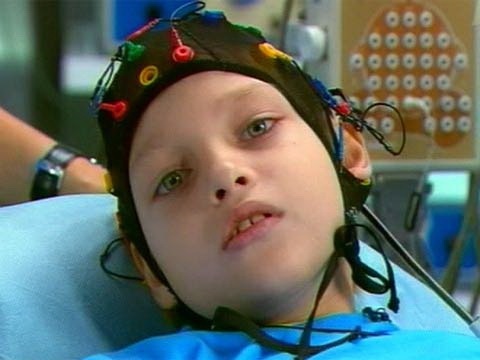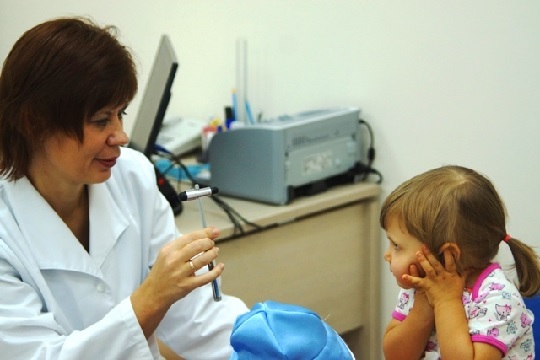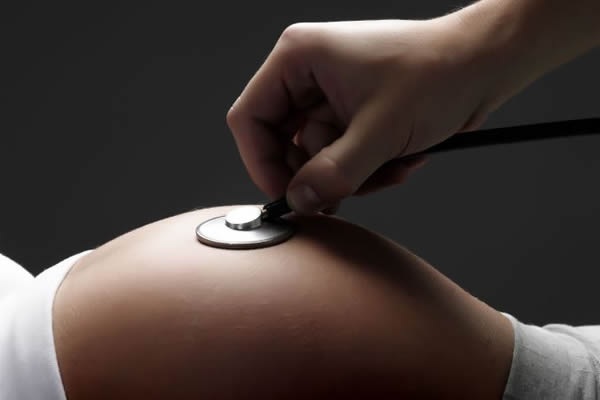Characteristic signs and possible forms of childhood epilepsy
Contents:
- Etiological factors and risks of
- Symptoms of epilepsy in children
- Principles of treatment and possible consequences
Epilepsy belongs to chronic diseases of the nervous system and is manifested by fits with loss of consciousness, erratic muscle contractions. The frequency of detection of the disease among the child population is about 1%.Parents are worried by the question of what causes epilepsy in children and how to help the baby cope with the disease without consequences?
Etiological factors and risks of
 The majority of health problems of small patients are associated with moments before and at the time of their birth. It is possible to identify the underlying causes of epilepsy in a child:
The majority of health problems of small patients are associated with moments before and at the time of their birth. It is possible to identify the underlying causes of epilepsy in a child:
- Risk factors during pregnancy - severe toxicosis with fetal hypoxia( oxygen starvation), infections affecting the baby's brain( influenza, venereal diseases), maternal addictions( alcohol, nicotine, narcotic and toxic substances).
- Features of childbirth - injuries and lesions obtained in the process of birth( length of the baby in the birth canal, time of the waterless period and the probability of infection, umbilical cord entanglement and obstetrical measures - obstetrical forceps).
- Craniocerebral trauma and concussion, predisposing to convulsions.
- Diseases affecting the nervous system( encephalitis, meningitis) and proceeding with intoxication, significant fever and seizures. Foci of increased excitability are formed, on the basis of which seizures occur.
- Neoplasms of various nature.
- Hereditary predisposition is an insufficient amount of dopamine, which reduces the excitability typical for parents.
Important! The provoking factors are of different nature, but their action is directed to the formation of congestion sites of neurons( epileptic focus), staying in a constant excited state. The impulse coming out of such a focus causes an attack. The insidiousness of the disease lies in the formation of new areas and deterioration of well-being.
Signs of epilepsy in children
The first signs of epilepsy in a child can be observed in infancy. The disease is atypical and it can be difficult to distinguish an attack from the active movements of a newborn. It often provokes a high fever. The baby freezes, stops swallowing and reacts to external stimuli. After an attack, weakness is observed in a certain part of the body.
Pediatric epilepsy has several other symptoms than in adults. In order to recognize the disease, you need to familiarize yourself with the full spectrum of manifestations and understand that not only cramps occur in epilepsy. Characteristic features of the children include:
- Seizures - the duration of the attack is 10-20 seconds, the muscles tighten at first, bending arms in the elbows and strongly bending at the knees, involuntary urination and defecation may occur. There is intermittent heavy breathing and after a convulsion the child falls asleep.
- An atonic fit resembles an unconscious condition: sudden muscle relaxation and loss of consciousness, the baby can fall, looks weak. Several episodes of the so-called "fainting" should alert parents and be a signal of the necessary consultation.
- Absenses - bouts of "missing hovering", the eyelids of the child can twitch and the head may fall back. He stops in mid-sentence and does not react to irritants, then returns to his own affairs, not remembering what is happening.
- Children's spasm - the tilts of the head to the chest and pulling the handles to the body, the body moves forward and legs stretch. This state is observed after awakening in children from 2 to 5 years old and can disappear on their own. Sleepwalking and nightmares at night.
- Permanent head pain in combination with nausea and, often, vomiting.
- Violation of speech - after attacks, the child is not able to communicate.
One of the special types of the disease is small or absense epilepsy in children and adolescents. Its distinctive feature is the presence of seizures-absence. This moment is not longer than 30 seconds, when the child's eyes freeze and he "turns off" from the outside world. His limbs and head are directed in one direction, while muscles are sharply strained.
The kid does not remember the attack and returns to the interrupted cases. The disease is more often registered in girls and occurs in early school age from 6 to 7 years in families with a genetic predisposition. In the pubertal period, the disease can disappear or grow into another form.
Causes an absense emotional outburst( fear, anger, admiration, surprise), hyperventilation and distracted attention. It is often observed from morning or evening. Physical activity and mental activity reduce the number of seizures.
Principles of treatment and possible consequences
Parents ask the current question: "How to treat epilepsy in children?".To improve the quality of life of the baby and his family, positive prognosis and prevention of negative consequences, several principles are formed:
- timely diagnosis, identification and elimination of the cause of the disease;
- precise diagnosis - to distinguish true epilepsy from epileptic syndrome;
- rational nutrition with the right ratio of lipids, proteins and carbohydrates;
- drug treatment according to age and severity of the current, appoints exclusively the doctor;
- psychotherapy, hormone therapy, physiotherapy - depends on the cause of the disease;
- surgical treatment in the presence of cysts, neoplasms or hematomas, is prescribed individually.
 The consequences of epilepsy in children depend on the course of the disease and the treatment:
The consequences of epilepsy in children depend on the course of the disease and the treatment:
- traumatic injuries during an attack;
- unstable emotional state( whims, aggression);
- difficulties in mental development;
- aspiration pneumonia with chronic exposure to the lungs of saliva and vomit;
- problems with social adaptation;
- lethal outcome.
Thus, despite the "terrible" diagnosis, timely recognition, proper treatment paired with love and care give a chance and a positive answer to the question: "Is it possible to cure epilepsy in a child?".
write the question in the form below:



